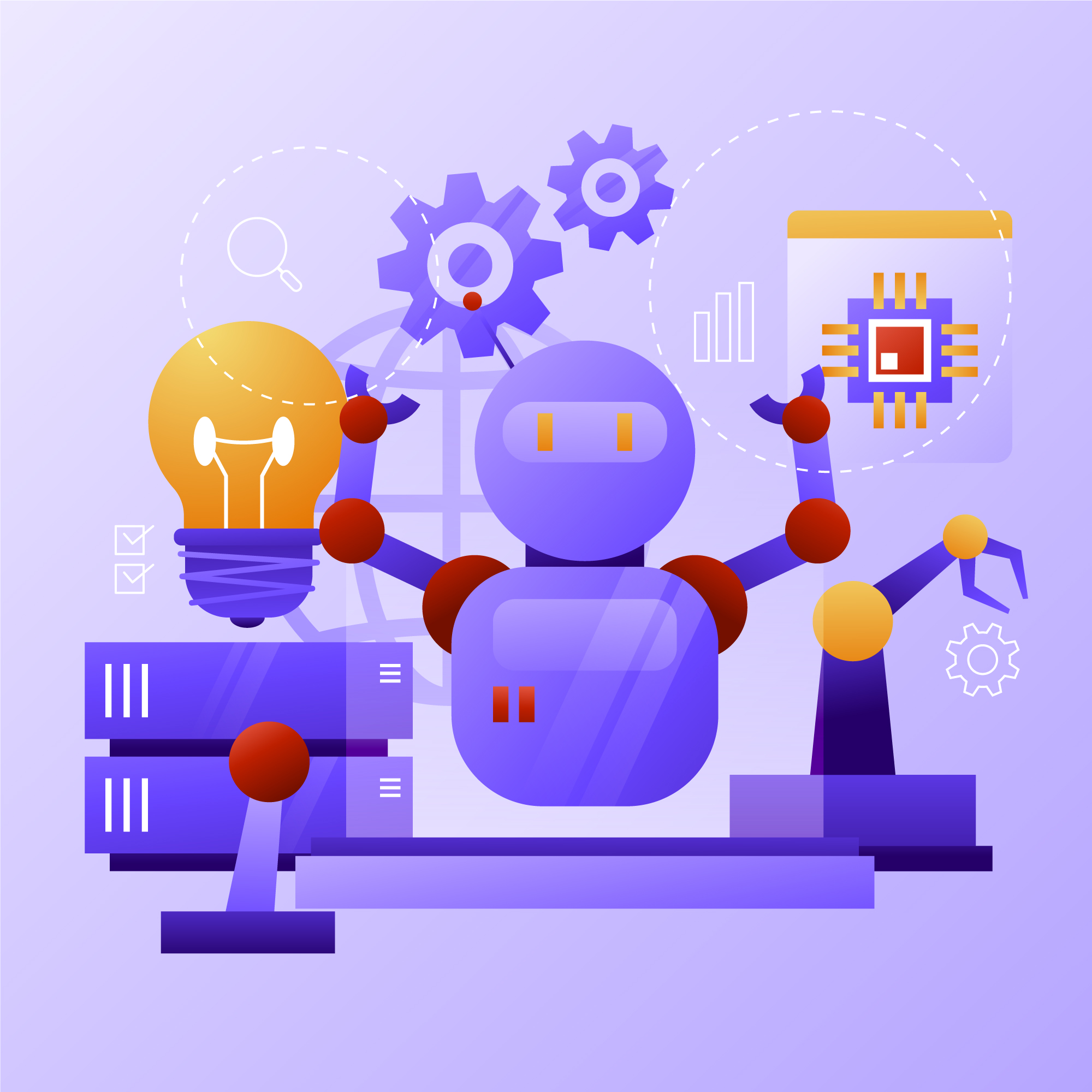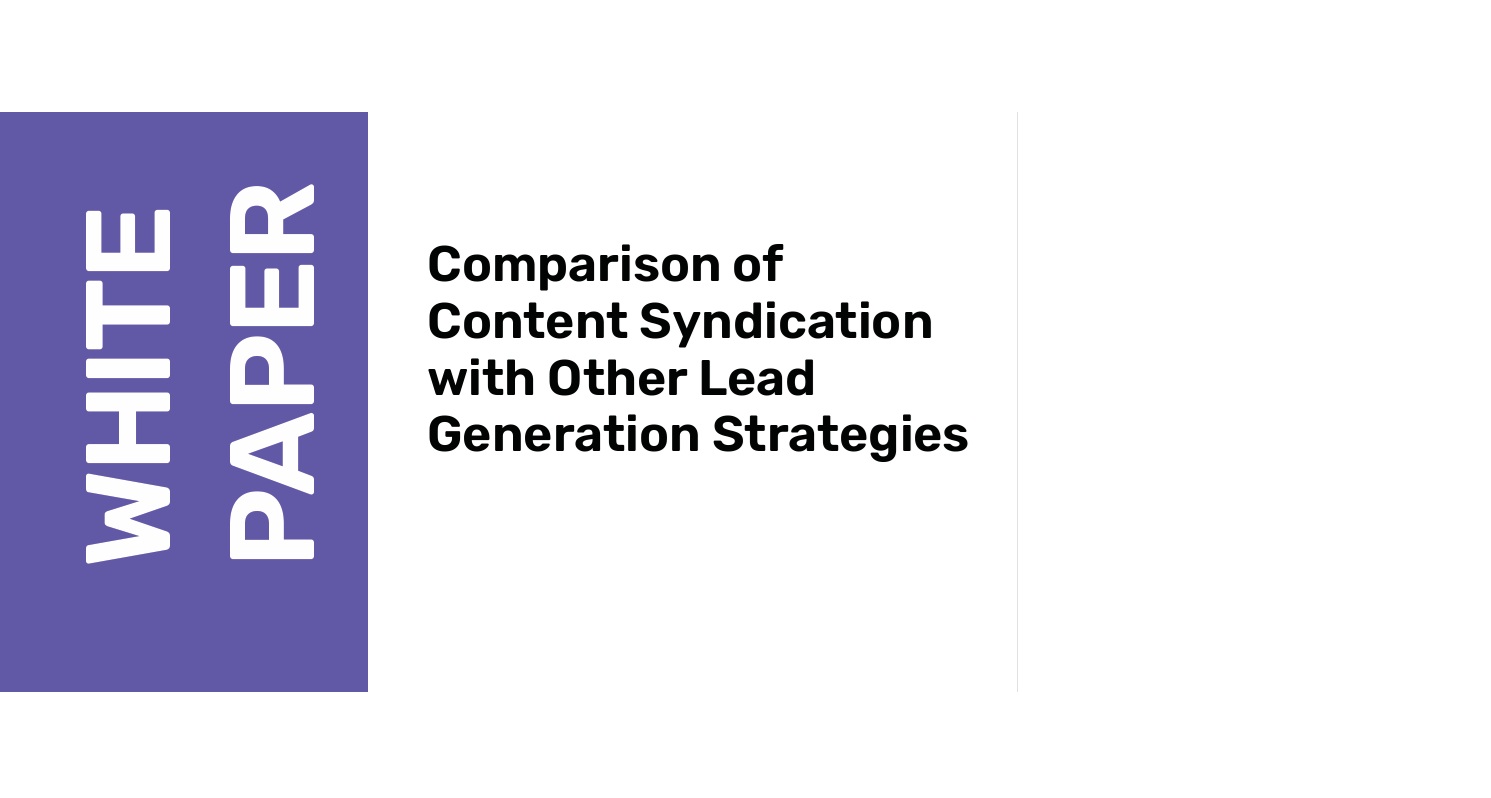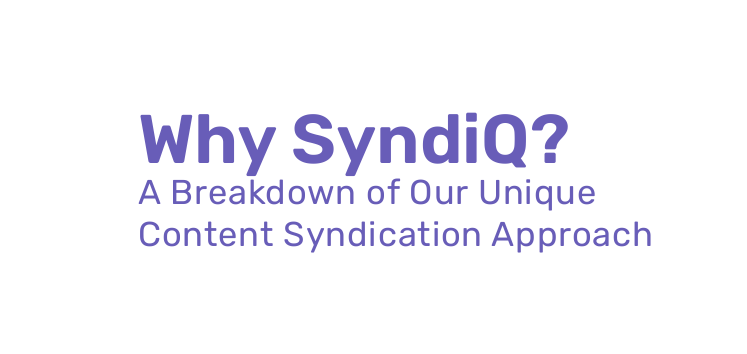As content syndication continues to evolve, B2B companies are seeking new ways to maximize audience engagement, improve marketing outcomes, and streamline processes. Traditional syndication methods, such as cross-posting and guest blogging, are becoming less effective in a crowded digital market.
Has conventional content syndication lost its edge?
Imagine a future where AI integrates seamlessly with your content creation processes, transforming how you engage with audiences and drive business growth. In this future, AI-driven content syndication offers a powerful combination of machine learning, natural language processing (NLP), and predictive analytics to create highly personalized, data-driven strategies that achieve unmatched results.
Understanding AI Content Integration
AI content integration refers to the process of utilizing artificial intelligence to generate, optimize, and distribute content across various digital platforms, including websites, mobile apps, and social media channels. AI algorithms analyze vast amounts of data to automate content syndication tasks, enhance user experiences, and select the most relevant content for specific touchpoints.
Why is AI Integration Crucial Now?
The exponential growth of digital content has created a demand for secure, efficient, and scalable content management systems. AI provides solutions to many of these challenges by automating manual processes, improving content performance, and allowing businesses to expand operations without compromising on quality and consistency.
According to Gartner, AI technologies are predicted to create $2.9 trillion in business value by 2025. For B2B marketers, AI is already proving to be a game-changer, especially when it comes to content syndication.
Benefits of AI-Driven Content Syndication
1. Automation
AI’s ability to automate repetitive tasks, such as content tagging, data entry, and content distribution, is one of its greatest advantages. AI-powered tools like Outbrain and Taboola allow you to syndicate content across multiple channels without manual intervention.
Example: A B2B SaaS company using HubSpot integrated AI to automate the distribution of blog posts across LinkedIn, Twitter, and industry-specific platforms. This reduced manual effort by 50%, allowing their marketing team to focus on strategic tasks rather than repetitive ones.
2. Personalization
In today’s crowded content landscape, personalization is critical. AI uses predictive analytics to analyze user behavior and preferences, enabling businesses to deliver more relevant, tailored content.
Stat: According to Evergage, 88% of marketers say AI-powered personalization has improved their business outcomes, with nearly half citing a 10-30% increase in conversion rates.
Example: Netflix uses AI-driven personalization to suggest content tailored to each user’s preferences, behavior, and interactions. B2B companies can use similar AI tools, such as Marketo, to deliver personalized reports, whitepapers, and case studies to prospects based on their specific needs.
3. Data-Driven Insights
One of the most powerful aspects of AI is its ability to process massive datasets to provide actionable insights. AI can track performance metrics, such as click-through rates, engagement levels, and SEO rankings, and offer optimization suggestions.
Case Study: IBM Watson Analytics helped a global B2B enterprise analyze engagement metrics and identify which types of content resonated most with different customer segments. By using AI to refine its content strategy, the company increased lead generation by 20% and improved engagement rates by 35%.
4. SEO Optimization
Search engine optimization (SEO) is key to ensuring that your syndicated content reaches the right audience. AI can analyze search patterns, identify relevant keywords, and make optimization suggestions to improve rankings.
Example: AI tools like SurferSEO use machine learning algorithms to help businesses optimize content for specific keywords. These tools analyze competitor pages, search intent, and content gaps to suggest improvements, leading to a higher ranking in search results.
Stat: AI-driven content optimization can boost organic traffic by up to 30% according to research by Search Engine Journal.
Key Components of AI in Content Syndication
For AI-driven content syndication to work efficiently, several key components must be integrated:
1. Natural Language Processing (NLP)
NLP is a branch of AI that allows machines to understand, interpret, and respond to human language. This technology is particularly useful in content syndication, where it can analyze social media posts, reviews, and other unstructured data to generate insights into audience sentiment and preferences.
Example: Hootsuite Insights uses NLP to track brand mentions, analyze customer sentiment, and provide real-time recommendations for content adjustments. This data helps B2B marketers fine-tune their content strategy to better resonate with target audiences.
2. Generative AI
Generative AI tools, like GPT-4 or Jasper.ai, are designed to create new content based on input data. These tools can generate blog posts, social media updates, and more, helping businesses maintain a consistent content pipeline without the need for manual writing.
Example: A B2B marketing agency used Jasper.ai to automatically generate 70% of their content, including product descriptions, blog posts, and email marketing campaigns. This allowed them to scale their operations significantly while maintaining content quality.
3. Integration of APIs
Application Programming Interfaces (APIs) allow different software systems to communicate and share data. In AI content syndication, APIs can be used to integrate analytics tools, marketing automation systems, and content management platforms.
Example: A multinational B2B tech company integrated AI-powered APIs between its CRM (Salesforce) and content management system (WordPress). This enabled seamless content distribution across multiple channels while syncing real-time customer data, improving lead nurturing by 25%.
4. Machine Learning (ML)
Machine learning algorithms allow systems to learn from data and improve performance over time. In content syndication, ML helps optimize content delivery methods based on user behavior and performance data.
Example: Adobe Sensei uses machine learning to automatically adjust marketing campaigns, predicting the best content to deliver based on historical data. This results in higher engagement and conversion rates for B2B companies using the platform.
Metrics You Should Monitor for AI-Driven Syndication Success
To measure the success of your AI-driven content syndication strategy, monitor the following metrics:
Conversion Rate: Track the percentage of visitors who take the desired action (click-throughs, form submissions, purchases).
Example: A B2B marketing firm improved conversion rates by 18% after integrating AI-powered personalization into their content syndication efforts.
SEO Performance: Measure improvements in keyword rankings, website traffic, and backlink generation.
Time Saved: Calculate the time saved by using AI tools for syndication as opposed to manual processes.
Engagement Metrics: Track the number of likes, views, shares, and comments on AI-generated content compared to traditional marketing efforts.
Stat: AI-driven content is 2x more likely to receive higher engagement compared to non-AI content, according to a study by Forrester.
The Future of AI in Content Syndication
Is content syndication a thing of the past? Absolutely not. In fact, AI-driven content syndication is set to become even more integral to B2B marketing strategies in the coming years.
AI will continue to refine and expand the reach of syndicated content, enabling businesses to connect with new markets, improve engagement rates, and reduce costs. The future of content syndication lies in its ability to scale personalization and optimize strategies through data-driven insights.
Case Study: A leading B2B cybersecurity company integrated AI into their content syndication strategy and saw a 50% reduction in content production time while increasing inbound leads by 30%. This demonstrates the long-term potential of AI for improving efficiency and scaling business growth.
Conclusion
The integration of AI into content syndication is revolutionizing how B2B companies create, distribute, and optimize their content. By leveraging AI tools for automation, personalization, data analysis, SEO optimization, and more, businesses can significantly increase their marketing efficiency and ROI.
It’s time to take advantage of AI-driven content syndication to stay ahead of the competition, boost audience engagement, and scale your operations for the future.



